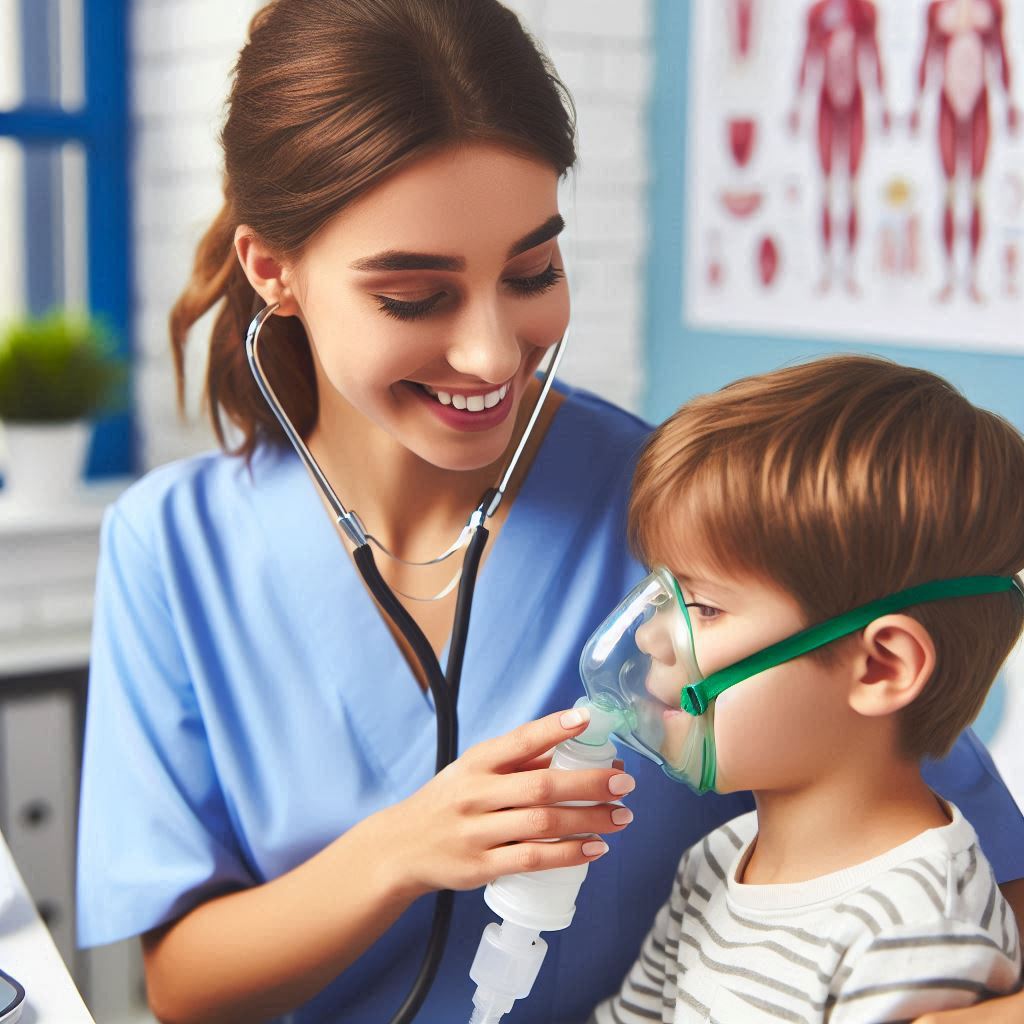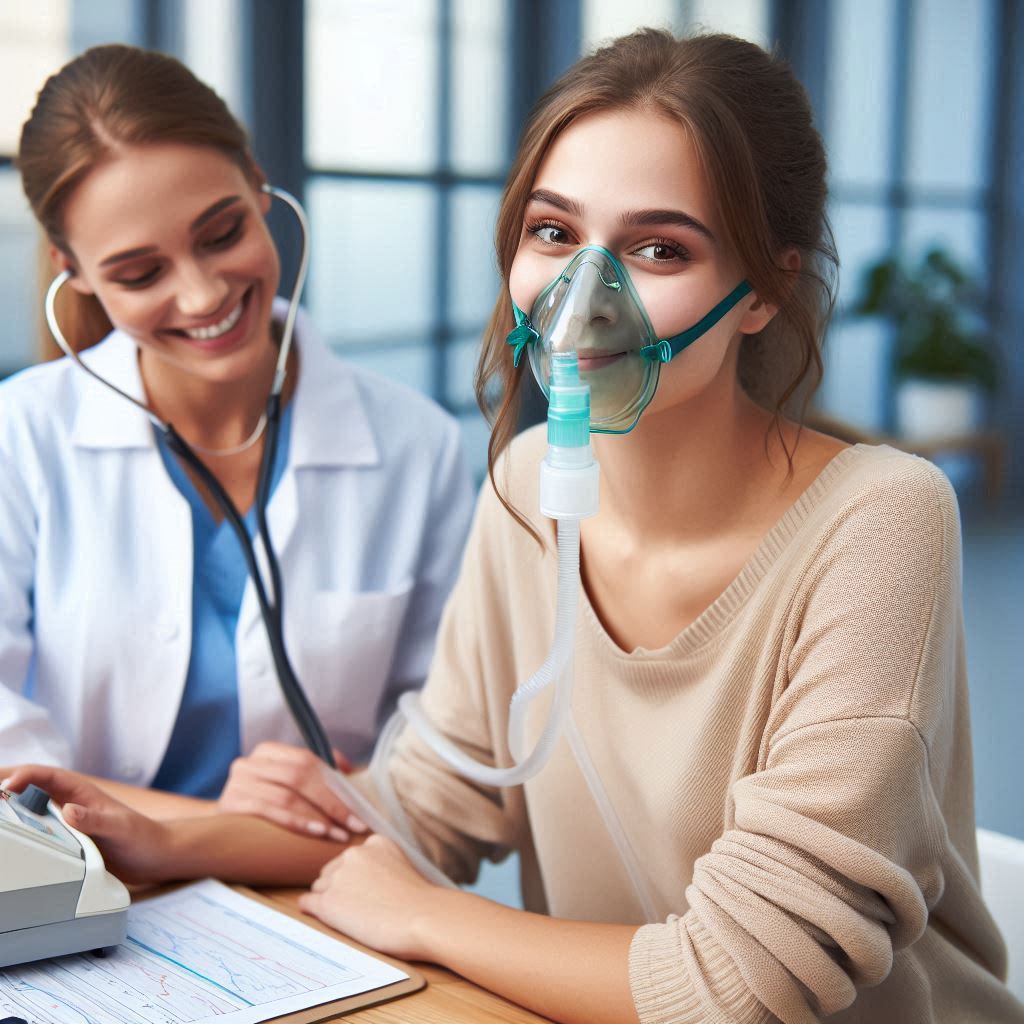Introduction
Respiratory therapy holds a pivotal position within the healthcare industry, dedicated to the diagnosis, treatment, and management of respiratory conditions following the history and evolution of respiratory Therapy Profession.
Its evolution traces back to the early 20th century, spurred by the urgent need to combat respiratory illnesses during the polio epidemic.
Initially emerging as a specialized field focused on providing mechanical ventilation to polio patients, respiratory therapy quickly expanded its scope.
Over time, the profession diversified to encompass a wide range of roles and responsibilities.
It evolved beyond emergency care to include chronic disease management, pulmonary rehabilitation, diagnostic testing, and therapeutic interventions.
This expansion was supported by advancements in medical technology, such as the development of ventilators, oxygen therapy devices, and pulmonary function testing equipment.
The role of respiratory therapists has grown increasingly crucial within multidisciplinary healthcare teams.
They collaborate closely with physicians, nurses, and other specialists to deliver comprehensive respiratory care across diverse healthcare settings, including hospitals, clinics, rehabilitation centers, and home care environments.
Early beginnings of respiratory therapy
Respiratory therapy as a profession began to take shape during the mid-20th century. The use of mechanical ventilators marked a significant advancement in the treatment of respiratory diseases, particularly during public health crises like the polio epidemic.
Mechanical ventilators during the polio epidemic in the 1950s
During the 1950s, as the polio virus swept through communities, many patients suffered from respiratory failure and required assistance to breathe.
Mechanical ventilators, which were initially developed for use in anesthesia, were repurposed to provide life-saving respiratory support to polio patients. This marked a turning point in the field of respiratory therapy.
Nurses and technicians played a vital role in operating these early mechanical ventilators and assisting patients with their respiratory needs. Their dedication and expertise helped to ensure that patients received the care they needed during a time of crisis.
This collaborative effort between healthcare professionals laid the foundation for the development of respiratory therapy as a distinct healthcare discipline.
As the understanding of respiratory diseases grew, so did the need for specialized care for patients with respiratory conditions.
Respiratory therapy programs began to emerge in hospitals and educational institutions, providing training for individuals interested in pursuing a career in respiratory care.
Role of nurses and technicians in providing respiratory care
The role of respiratory therapists expanded beyond operating mechanical ventilators. They trained to assess and treat various respiratory conditions, including asthma, COPD, lung cancer, and respiratory infections.
They became integral healthcare team members, working with physicians and other professionals to provide comprehensive respiratory care.
Advancements in technology further transformed respiratory therapy. New ventilator modes, airway clearance techniques, and diagnostic tools enhanced the care respiratory therapists could offer.
They became experts in managing ventilators, administering medications, and conducting lung function diagnostic tests.
Respiratory therapists began practicing in various settings, including nursing homes, home healthcare agencies, and pulmonary rehabilitation centers. Their expertise made them valuable interdisciplinary team members, collaborating to improve patient outcomes.
Respiratory therapists also played a crucial role in educating patients about their conditions. They taught patients how to manage their symptoms effectively, empowering them to take control of their respiratory health.
The demand for respiratory therapists has grown as respiratory diseases have increased. The COVID-19 pandemic, in particular, highlighted their essential role in caring for critically ill patients with respiratory failure.
Respiratory therapists worked tirelessly on the front lines, supporting patients battling the virus and aiding in their recovery.
Basically, the history and evolution of respiratory therapy reflect the dedicated efforts of healthcare professionals to improve respiratory health and quality of life.
From early mechanical ventilator use during the polio epidemic to today’s advanced respiratory care, respiratory therapists play a vital role in healthcare.
Their commitment to excellence and patient-centered care ensures individuals with respiratory conditions receive the best possible treatment and support.
Formation of professional organizations
The establishment of the American Association for Inhalation Therapy (AAIT) in 1947 marked a significant milestone in respiratory therapy history. This organization, founded by a group of dedicated physicians and nurses, aimed to address the growing need for specialized respiratory care.
Establishment of the American Association for Inhalation Therapy in 1947
In 1947, the American Association for Inhalation Therapy emerged as the first professional organization dedicated to respiratory care.
This pioneering group recognized the critical importance of standardizing and advancing inhalation therapy practices. They sought to create a unified platform for sharing knowledge, research, and best practices in respiratory care.
The AAIT’s founding members were driven by the desire to improve patient outcomes through better respiratory care techniques.
They understood that a professional organization could provide the structure and resources necessary to elevate the field. By bringing together healthcare professionals from various backgrounds, the AAIT fostered collaboration and innovation in respiratory therapy.
This Organization Laid the Foundation for Modern Respiratory Therapy
The AAIT’s efforts laid the groundwork for what we now know as modern respiratory therapy. One of their first initiatives was to establish educational standards for respiratory therapists.
They developed training programs and certification processes to ensure that practitioners possessed the necessary skills and knowledge.
The AAIT also played a crucial role in promoting research in respiratory therapy. They encouraged studies on new treatment methods, technologies, and approaches to patient care.
This focus on research helped to continuously improve respiratory therapy practices and patient outcomes.
As the AAIT grew, it evolved to meet the changing needs of the healthcare industry. In the 1970s, the organization changed its name to the American Association for Respiratory Therapy (AART) to better reflect the expanding scope of the profession.
Later, it became the American Association for Respiratory Care (AARC), the name it holds today.
The AARC has been instrumental in advocating for the respiratory therapy profession.
They have worked tirelessly to raise awareness about the importance of respiratory care and to secure recognition and support from healthcare institutions and policymakers.
Their advocacy efforts have resulted in better working conditions, professional standards, and patient care practices.
The AARC continues to provide valuable resources for respiratory therapists. They offer continuing education opportunities, professional development programs, and access to cutting-edge research.
These resources help respiratory therapists stay current with the latest advancements in the field, ensuring they can provide the best possible care to their patients.
Read: How Genetic Counseling Improves Patient Care
Transform Your Career Today
Unlock a personalized career strategy that drives real results. Get tailored advice and a roadmap designed just for you.
Start NowDevelopment of educational programs
The development of formalized training programs for respiratory therapists marked a significant evolution in the profession. Initially, respiratory therapy skills were learned on the job, with no standardized education. However, the need for a more structured approach became evident as the field grew.
Shift Towards Formalized Training Programs for Respiratory Therapists
In the mid-20th century, the respiratory therapy profession began shifting towards formalized education.
The emergence of new respiratory care techniques and technologies highlighted the need for comprehensive training. This change aimed to ensure all practitioners possessed the essential skills and knowledge.
In the 1960s, the first formal respiratory therapy programs were established in the United States.
These programs offered structured curricula that covered anatomy, physiology, pharmacology, and respiratory care techniques. The goal was to prepare students for the complexities of patient care in various settings.
These educational programs significantly improved the quality of respiratory care.
They provided a standardized foundation of knowledge, ensuring all respiratory therapists met the same high standards. This shift also allowed for better integration of respiratory therapists into multidisciplinary healthcare teams.
The formalization of respiratory therapy education also led to the creation of specialized training programs.
Advanced courses were developed to focus on critical care, neonatal and pediatric respiratory care, pulmonary rehabilitation, and diagnostic testing. This specialization ensured that respiratory therapists could address a wide range of patient needs effectively.
Explain the Accreditation Process for Respiratory Therapy Schools
Accreditation became a crucial aspect of formalized respiratory therapy education. Accreditation ensures that educational programs meet established standards of quality and rigor. The Commission on Accreditation for Respiratory Care (CoARC) plays a pivotal role in this process.
The CoARC evaluates respiratory therapy programs based on various criteria, including curriculum content, faculty qualifications, facilities, and clinical training opportunities.
Programs that meet these standards receive accreditation, signifying their commitment to providing high-quality education.
The accreditation process begins with a thorough self-study by the respiratory therapy program. This self-study examines all aspects of the program, from course content to student outcomes.
The CoARC then reviews this self-study and conducts an on-site evaluation to verify the program’s quality.
Accredited programs must continuously meet CoARC standards to maintain their status. This ongoing evaluation ensures that respiratory therapy programs adapt to advancements in the field and continue to provide relevant and effective education.
Accreditation benefits students by ensuring they receive a rigorous education that prepares them for certification and practice. Graduating from an accredited program is often a requirement for licensure and employment in many states and healthcare institutions.
Read: Genetic Counseling for Inherited Disorders
Advancements in respiratory technology
Advancements in respiratory technology have significantly transformed the field of respiratory therapy over the years. Let’s delve into the introduction of new equipment and techniques that have revolutionized patient care.
Introduction of Ventilators
- Ventilators have played a crucial role in the treatment of patients with respiratory conditions.
- These devices provide mechanical ventilation to support breathing and maintain adequate oxygen levels in the body.
- Ventilators have become increasingly sophisticated with features such as different modes of ventilation, adjustable settings, and alarms for patient monitoring.
- The use of ventilators has greatly improved patient outcomes by ensuring proper oxygenation and ventilation in critically ill individuals.
Development of Respiratory Monitoring Devices
- Respiratory therapists now have access to advanced monitoring devices that allow them to assess a patient’s respiratory status in real-time.
- Pulse oximeters measure oxygen saturation levels in the blood, while capnography monitors end-tidal carbon dioxide levels.
- These tools help therapists to adjust treatment strategies promptly and ensure optimal patient care.
- The availability of accurate and reliable monitoring devices has enhanced the quality of care delivered to respiratory patients.
Implementation of Telemedicine
- Telemedicine has revolutionized the way respiratory therapy is delivered, especially in remote or underserved areas.
- Through video conferencing and remote monitoring tools, therapists can assess and treat patients from a distance.
- Telemedicine has increased access to respiratory care services and enabled timely intervention for patients in need.
- This technology has proven to be effective in improving patient outcomes and reducing hospital readmissions.
Utilization of High-Flow Oxygen Therapy
- High-flow oxygen therapy delivers a high flow rate of humidified oxygen to patients with respiratory distress.
- This technique is beneficial for patients with acute respiratory failure or exacerbation of chronic respiratory conditions.
- High-flow oxygen therapy is well-tolerated, improves oxygenation, and reduces the need for invasive ventilation.
- Its use has positively impacted patient outcomes by promoting better respiratory function and comfort.
Introduction of Airway Clearance Devices
- Airway clearance devices help in mobilizing and clearing mucus from the airways of patients with respiratory conditions.
- Devices like oscillatory positive expiratory pressure (OPEP) therapy and high-frequency chest wall oscillation (HFCWO) aid in improving lung function.
- Airway clearance devices are particularly effective in managing conditions like cystic fibrosis, bronchiectasis, and chronic obstructive pulmonary disease (COPD).
- These devices have enhanced the quality of life for patients by reducing the risk of lung infections and improving respiratory function.
Generally, advancements in respiratory technology have significantly enhanced the practice of respiratory therapy.
The introduction of new equipment and techniques, along with the integration of technology, has revolutionized patient care and improved outcomes.
Respiratory therapists continue to embrace innovation in the field to provide the highest quality of care to individuals with respiratory conditions.
Read: How Genetic Counselors Help with Rare Diseases

Recognition as a specialized profession
Respiratory therapy’s journey to recognition as a distinct profession within healthcare is remarkable. Initially, it was an extension of nursing and other medical roles, but over time, it developed into a specialized field.
How Respiratory Therapy Became Recognized
The recognition of respiratory therapy as a specialized profession began in the mid-20th century.
The field initially emerged in response to the polio epidemic, which highlighted the need for specialized care for patients with respiratory issues. Respiratory therapists, then known as inhalation therapists, provided essential support for patients requiring mechanical ventilation.
In the 1960s and 1970s, the demand for specialized respiratory care grew. Hospitals began to recognize the unique skills and knowledge required to manage respiratory patients effectively.
This recognition led to the establishment of dedicated respiratory therapy departments within hospitals. Respiratory therapists played a crucial role in managing patients with chronic respiratory diseases, trauma, and post-surgical complications.
The Role of Professional Certification
Professional certification has been pivotal in establishing standards for respiratory therapy practice. The American Association for Respiratory Care (AARC) was founded in 1947, initially as the Inhalation Therapy Association.
The AARC has been instrumental in advocating for the profession and setting high standards for practice and education.
Certification by the National Board for Respiratory Care (NBRC) became a crucial milestone for respiratory therapists.
The NBRC, established in 1960, developed rigorous certification exams to ensure that respiratory therapists possess the necessary knowledge and skills.
The Certified Respiratory Therapist (CRT) credential was the first certification introduced, followed by the Registered Respiratory Therapist (RRT) credential.
Obtaining professional certification is now a standard requirement for practicing respiratory therapists. Certification demonstrates a therapist’s competence and commitment to the field.
It ensures that respiratory therapists meet established standards of practice and adhere to ethical guidelines. Certification also fosters continuous professional development, as therapists must engage in ongoing education to maintain their credentials.
Transform Your Career Today
Unlock a personalized career strategy that drives real results. Get tailored advice and a roadmap designed just for you.
Start NowEstablishing Standards for Practice
Professional certification has played a vital role in establishing consistent standards for respiratory therapy practice.
Certification exams assess critical areas such as patient assessment, therapeutic interventions, and equipment management. This standardization ensures that respiratory therapists across different healthcare settings deliver high-quality care.
Certification has also contributed to the professional recognition of respiratory therapists. Certified therapists are seen as experts in their field, capable of managing complex respiratory conditions.
This recognition has led to greater autonomy for respiratory therapists and increased collaboration with other healthcare professionals.
The recognition of respiratory therapy as a specialized profession within healthcare has been a transformative journey. From its early days during the polio epidemic to its current status, respiratory therapy has evolved significantly.
Professional certification has been instrumental in establishing standards for practice and ensuring the delivery of high-quality care.
Today, respiratory therapists are recognized as essential members of the healthcare team, contributing their expertise to improve patient outcomes and advance the field.
Read: Genetic Testing and Counseling: An Overview
Integration into interdisciplinary healthcare teams
Respiratory therapists play a crucial role in interdisciplinary healthcare teams, collaborating closely with other healthcare professionals to provide comprehensive patient care. This collaboration ensures that patients receive holistic and effective treatment, addressing all aspects of their health.
Respiratory Therapists Collaborate with Other Healthcare Professionals
Respiratory therapists work alongside physicians, nurses, and other specialists in various settings. In hospitals, they assist doctors during critical procedures, such as intubations and bronchoscopies.
They also collaborate with nurses to monitor patients’ respiratory status and adjust treatments as needed. This teamwork is especially vital in intensive care units, where patients often require complex respiratory support.
In outpatient settings, respiratory therapists partner with primary care physicians and pulmonologists. They provide education on managing chronic respiratory diseases like COPD and asthma.
They also conduct pulmonary function tests and other diagnostic procedures, providing essential data to inform treatment plans.
Respiratory therapists often work with physical therapists and occupational therapists during pulmonary rehabilitation programs.
They help design exercise regimens that improve lung function and overall fitness. They also educate patients on breathing techniques and energy conservation strategies.
Pharmacists are another key collaborator. Respiratory therapists work with them to manage and optimize medication regimens for respiratory patients. This collaboration ensures patients use inhalers and other respiratory medications correctly, maximizing their benefits.
Importance of Teamwork in Providing Comprehensive Patient Care
Teamwork is vital in healthcare, especially in managing complex conditions like respiratory diseases. Interdisciplinary collaboration ensures that all aspects of a patient’s health are considered, leading to more effective and comprehensive care.
In emergency situations, such as during a code blue, respiratory therapists’ quick actions and collaboration with the medical team can be lifesaving. Their expertise in airway management and mechanical ventilation is crucial in these high-pressure situations.
Effective teamwork also enhances chronic disease management. For example, in managing COPD, respiratory therapists work with dietitians to address nutritional needs, social workers to provide support resources, and psychologists to manage anxiety and depression related to the condition. This comprehensive approach improves patients’ quality of life and health outcomes.
Communication is key to successful teamwork. Respiratory therapists participate in multidisciplinary team meetings, sharing insights and updates on patients’ respiratory status. This ensures that all team members are informed and can coordinate their efforts effectively.
Furthermore, interdisciplinary collaboration fosters a culture of continuous learning and improvement. Respiratory therapists learn from other healthcare professionals, gaining new perspectives and skills. This shared knowledge enhances the overall quality of care provided to patients.
Current challenges and future trends
The respiratory therapy profession faces several key challenges today. These challenges include the rising prevalence of chronic respiratory diseases, a shortage of skilled respiratory therapists, and the need for continuous professional development.
Addressing these challenges is crucial for ensuring the delivery of high-quality respiratory care.
Identifying Key Challenges
One of the primary challenges in respiratory therapy is the increasing incidence of chronic respiratory diseases such as COPD, asthma, and lung cancer.
These conditions place a significant burden on healthcare systems worldwide. Respiratory therapists must stay abreast of the latest treatment protocols and management strategies to provide effective care for these patients.
Another critical challenge is the shortage of qualified respiratory therapists. The demand for skilled professionals continues to grow, driven by an aging population and the expanding scope of respiratory care.
This shortage impacts the ability to provide timely and comprehensive care, especially in underserved and rural areas.
The need for continuous professional development also poses a challenge. Respiratory therapists must keep up with advancements in technology, treatment protocols, and clinical practices.
Ongoing education and training are essential to maintain competency and deliver the highest standards of care.
Predicting Future Trends in Technology
Future trends in respiratory therapy will likely be shaped by technological advancements. One such trend is the integration of telehealth in respiratory care.
Telehealth enables remote monitoring and management of patients with chronic respiratory conditions, improving access to care and reducing hospital readmissions.
Advancements in wearable technology will also impact respiratory therapy. Wearable devices that monitor respiratory parameters in real time can provide valuable data for managing chronic respiratory diseases.
These devices can alert healthcare providers to changes in a patient’s condition, allowing for timely interventions.
Transform Your Career Today
Unlock a personalized career strategy that drives real results. Get tailored advice and a roadmap designed just for you.
Start NowArtificial intelligence (AI) and machine learning will play a significant role in respiratory care. AI can analyze large datasets to identify patterns and predict disease exacerbations.
This technology can assist respiratory therapists in making data-driven decisions, optimizing treatment plans, and improving patient outcomes.
Future Trends in Treatment Protocols
Treatment protocols in respiratory therapy are expected to evolve with advancements in personalized medicine.
Personalized treatment plans tailored to individual patients’ genetic makeup, lifestyle, and disease characteristics will become more prevalent. This approach aims to improve the efficacy of treatments and minimize adverse effects.
Another emerging trend is the focus on preventive care. Preventive strategies, including smoking cessation programs, vaccination campaigns, and public health initiatives, will be crucial in reducing the incidence of respiratory diseases.
Respiratory therapists will play an active role in promoting preventive measures and educating patients on maintaining respiratory health.
In general, the respiratory therapy profession faces significant challenges and opportunities for growth.
Addressing the rising prevalence of chronic respiratory diseases, the shortage of skilled professionals, and the need for continuous professional development are critical.
Embracing future trends in technology and treatment protocols will enable respiratory therapists to provide innovative and effective care.
By staying informed and adaptable, respiratory therapists can navigate these challenges and contribute to the advancement of respiratory healthcare.
Conclusion
Throughout its history, the respiratory therapy profession has undergone remarkable evolution, shaped by advancements in medical science, technology, and healthcare delivery.
From its origins in the early 20th century as inhalation therapy to the establishment of formal education and professional standards, respiratory therapy has emerged as a critical discipline in healthcare.
Key milestones include the development of mechanical ventilators, which revolutionized the management of respiratory failure, and the recognition of respiratory therapists as essential members of multidisciplinary healthcare teams.
Over the years, the role of respiratory therapists has expanded to encompass a wide range of responsibilities, from managing ventilator settings and administering oxygen therapy to conducting pulmonary function tests and providing patient education.
Today, respiratory therapists play a pivotal role in treating patients with acute and chronic respiratory conditions, including asthma, COPD, and respiratory distress syndromes.
They collaborate closely with physicians, nurses, and other healthcare professionals to optimize patient care and improve outcomes.
[E-Books for Sale]
The Big Book of 500 High-Paying Jobs in America: Unlock Your Earning Potential
$19.99 • 500 High-Paying Jobs • 330 pages
Explore 500 high-paying jobs in America and learn how to boost your career, earn more, and achieve success!
See All 500 High-Paying Jobs of this E-Book
1001 Professions Without a Degree: High-Paying American Jobs You Can Start Now
$19.99 • 1001 Professions Without a Degree • 174 pages
Discover 1001 high-paying jobs without a degree! Unlock career tips, skills, and success strategies for just $19.99!




